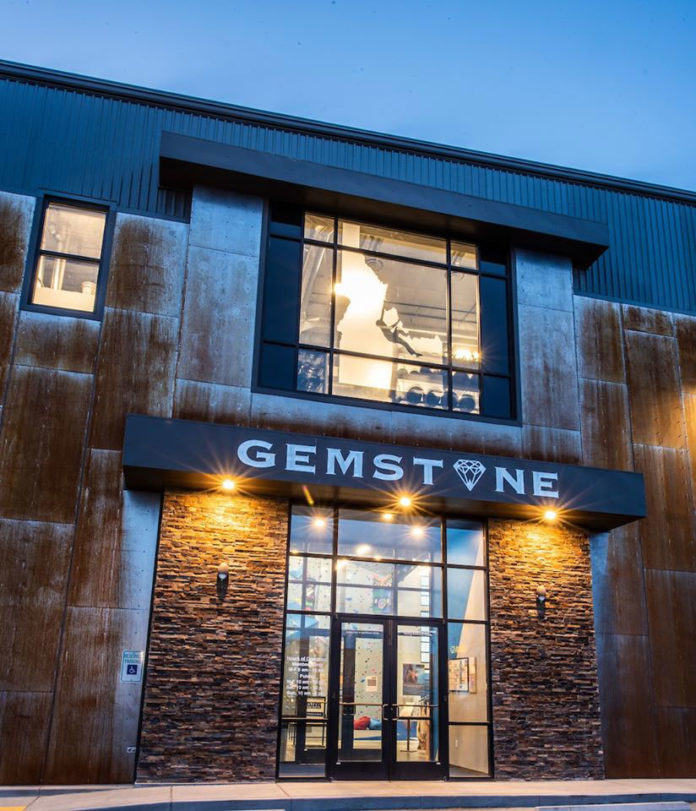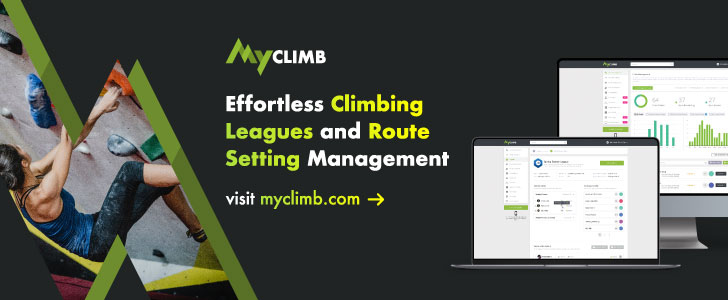Behind the Closures…is a series that interviews gym owners, managers and employees during the Coronavirus (COVID-19) pandemic—and looks at how the situation is impacting facilities and communities around North America.
For this installment, CBJ reached out to Gemstone Climbing Center in Idaho to get a detailed timeline of the unprecedented events these past few weeks and talk about the potential for a climbing-related scientific breakthrough.
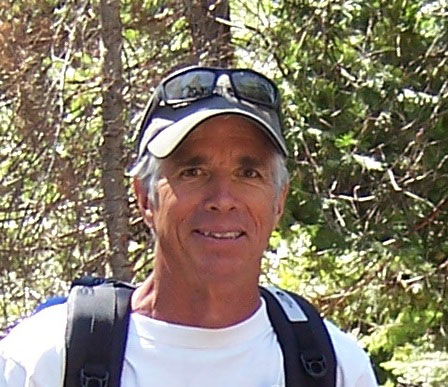
Name: Don Campbell
Title: Owner, Gemstone Climbing
Location: Twin Falls, Idaho
CBJ: What was the progression leading up to Gemstone’s full closure?
CAMPBELL: For many of us, COVID-19 became real in late February/early March. With the first fatality, the media went into overdrive and the public responded in kind. I was skiing at Snowbird, Utah, the first week of March. I cut my trip short and was back at the gym on March 6th and notices/posters were up about hand-sanitizers, hand washing, staying home if sick (employees and patrons). On Saturday (March 7), more and better notices were up—and all seemed reasonable through the weekend.
Then, during our Monday management meeting, COVID was paramount. One of our partners is an emergency room doctor and we have a number of physicians as members…one of whom helps run our adaptive programs and runs the emergency response teams for our area of Idaho. They advised that we remain calm, rational, and responsible, so we implemented their recommendations and CDC guidelines. We drafted our first COVID Update for members, partners, staff and patrons trying to emphasize staying calm, rational and responsible.
On Thursday (March 12), I knew this was serious. I contacted my investment adviser. We located funds to ensure mortgage payment for 5-6 months. My personal thoughts at that time: I was comparing CDC data regarding COVID and influenza, and I was having a hard time figuring out why COVID-19 was capturing so much attention (e.g. influenza 24,000 dead, COVID less than 500). If attention to personal hygiene, cleanliness and staying-home-if-sick happened each flu season, less people would die and that was what we were doing here. But, was there more? I was having a hard time finding info more in depth than ‘the news.’
The following Friday was not good, but not yet out of control. Our doctors indicated emergency room visits were OK and we could operate the gym normally. Although USA Climbing cancelled all local events, our comp was not until April 18. We didn’t cancel the citizens’ side of the comp. We were getting calls from people thanking us for not closing. Along with physician advisers, we discussed balancing community health and fitness with the pandemic. The docs were talking about suicides increasing. These were not straight-forward decisions—people would likely get hurt/sick/die regardless of which way we went.
Then on Monday, March 16, we sent a second COVID Update. Visits to the gym were declining dramatically, and so we closed early. We were told the ER was getting extremely busy but to stay calm. By Tuesday, the ER was very busy. Toilet paper was difficult to find, schools were closing, daycares were shut down and food was disappearing from grocery store shelves.
On a high note, the Bank of Idaho postponed all principal and interest payments for three months—yahoo, instant relief! Then, Wednesday night, Asana Climbing Gym announced closure, and on Thursday (March 19) we chose to close Gemstone. Our manager sent notices out to all our part-time employees and members. On Wednesday, March 25, the Idaho governor shut down the whole state except for essential businesses. Thursday, March 26, we signed documents with the bank postponing payments, and on Monday, March 30, I made calls regarding federal assistance; it looked like between meeting payroll and operating expenses, we’d be cash-strapped. Hopefully, enough members will choose to stay with us so we can meet payroll and operating expenses if federal assistance does not come through.
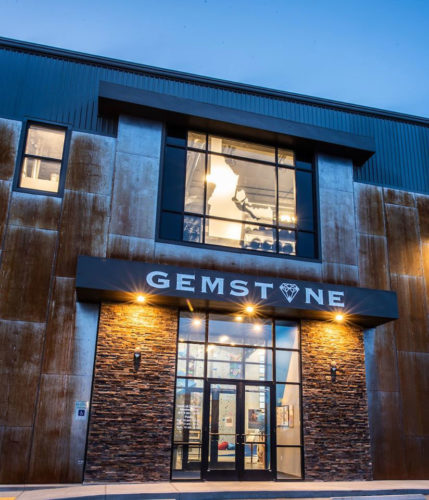
CBJ: How are you coping with the world’s woes—both with the gym business issues, and also just personally?
CAMPBELL: Here are two stories from our gym: First, one of our managers (a female yogi) said, ‘I have to work, I can’t stay home. He can’t tell me what to do, this is Idaho. Yoga saved my life and I have to work!’ And she’s right—yoga did save her life, this is not a joke, it’s fact.
Second, we helped one of our routesetters through serious health and wellness issues and he relies on Gemstone. If the governor/government takes this away, this young man’s future is up in the air. We’ve invested way too much into this kid to have a government edict push him the wrong way.
And then there are all the disabled and disadvantaged kids. We designed Gemstone to be fully ADA-accessible. We knew there was a large population of mentally and physically disabled people in our area, including veterans. Also, we knew that indoor climbing was therapeutic from research in Europe. What we didn’t know was that we would be the first fully ADA-accessible indoor climbing gym in the country (according to Walltopia). Within a year after opening, we started a scholarship program for disadvantaged and disabled youth, partnering with United Way and local service groups. We have programs with the Boys & Girls Club (this was before 1Climb), and we were developing programming with the Idaho School for the Deaf and Blind.
Our results with our adaptive program astounded our local medical community. Starting with one local physical therapy group, the regional medical center offered to create a shared staff position to promote kids and adult [climbing] programs.
And then, this thing hit.
We were the last gym in our area to close, and we took a lot of heat for it. From my perspective, the critics had little to no regard for the disadvantaged and disabled, whether PTSD, ‘on the spectrum’ or living with spina bifida, cerebral palsy or a C7 spinal injury.
At a management meeting, one of us offered this truism: ‘When something doesn’t make any sense, follow the money.’ Is it unreasonable to ask who is benefiting from this event? We know who is suffering. Is our cynicism getting the best of us?
Regardless of those answers, we all agree: we will do the best we can each and every day, and we’ll hope and pray this ends sooner than later. So, tie in folks, there’s loose rock in this first ascent and it could get ugly.
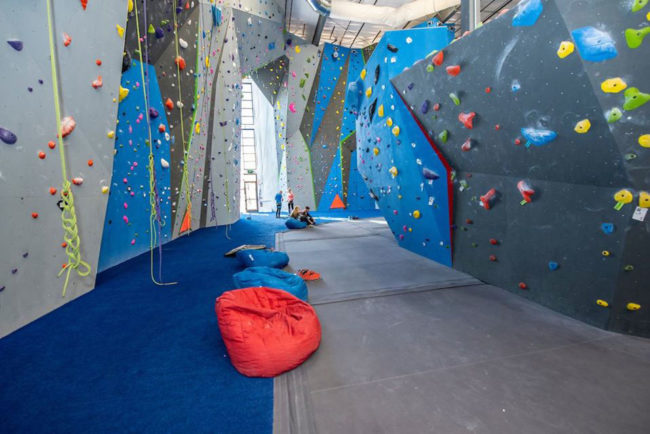
CBJ: Gemstone posted a Facebook message saying it was committed to paying employees for as long as possible, sort of urging people to maintain memberships if they were able to do so. How has the response been from members, in that regard?
CAMPBELL: Most people seem to be patient and want to support the gym and all that we have done and hope to do in the future.
CBJ: Could you say a bit more about how you are coping with the world’s woes—both with the gym business issues, and also just personally?
CAMPBELL: Basically, we will do what we can. What happens outside of our area is beyond our control. We are doing some research on chalk, holds, and hold-washing which may be helpful for other gyms. But other than that, it’s about survival.
Right now, my daily routine starts with reading about congressional and executive actions regarding finances. How to apply for, who to talk to, what help do I need to ensure that I check all the right boxes, how to ensure we can utilize various government programs for payroll, operations, etc. There is a new payroll assistance program—get it done.
We still have bills to pay, cleaning to do, routes to reset. We need to keep our members informed. We’re in Idaho and we are lucky. The wide outdoors is 10 minutes away. Social distancing is easy, and folks are generally optimistic—this will end.
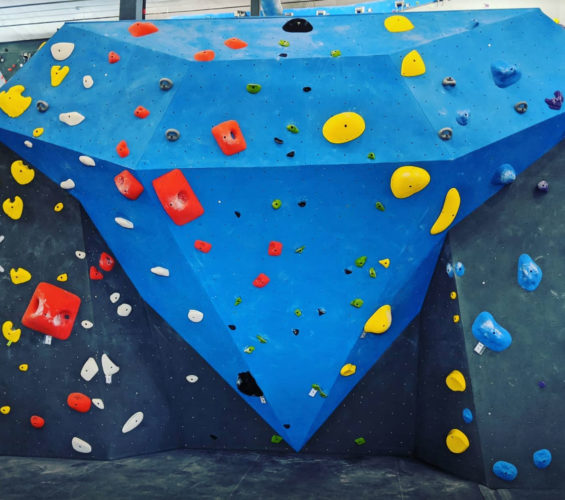
CBJ: So, what is Gemstone’s current situation with a mortgage/lease holder? This is a huge worry for a lot of gyms out there.
CAMPBELL: Our bank offered to postpone interest and principal payments for three months. This was a godsend. Membership dues are being diverted to operational and payroll. We’ll see what happens with the various federal programs.
CBJ: Your decision to close was made on recommendation by a front line staff physician. What factors will you be looking at to determine a reopening?
CAMPBELL: We’ll continue monitoring what’s happening in the ER. We will make decisions rationally and reasonably. When we get positive information we’ll sit down and discuss. This will have to be coordinated with government edicts and enforcement. We’ll inform our members, partners and patrons of the current local status. Right now, cleaning is a priority, followed by re-setting. We need to be ready when closure orders are lifted.
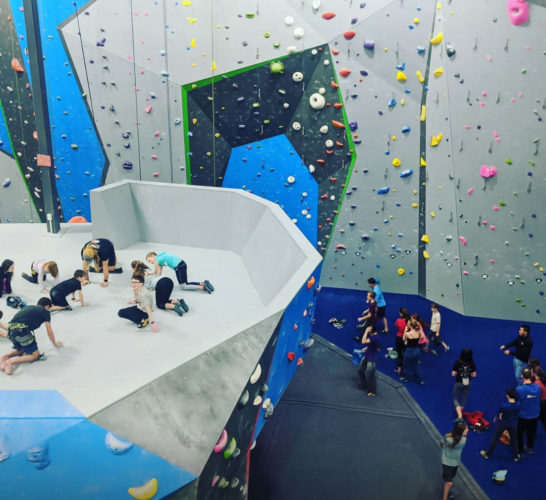
CBJ: When you and I first touched base for this interview, you mentioned thinking outside the box and turning challenges into possibilities. How can other gyms—and the whole industry—turn the mass closures into possibilities?
CAMPBELL: I believe it’s important to recognize that answers exist outside of whatever ‘box’ is used to enable ‘this is how we’ve always done it’—thinking. My background is as a biochemist. As a climber, I’m used to falling/failing and getting up and going again. I also raise fish, so water chemistry is not a challenge to me. I don’t look at a virus in the same way others might. For example, take a look at disinfection. How does it work? What does it do to the cell? A literature search indicated that the virus could be killed with alcohol, acids (low pH), antimicrobials like benzalkonium chloride, etc. But the same literature showed that viruses could be killed by high pH, the opposite end from acid. pH is a measure of acidity or alkalinity. Sulfuric acid is low, soaps are generally high.
So, just stay with me here—if I want to raise the pH of an aquarium I use baking soda (Arm & Hammer, that box you put in the refrigerator). It’s cheap and effective at raising pH. At what pH are viruses killed/inactivated? According to literature, viruses can be inactivated between pH 8—8.3. Baking soda (sodium bicarbonate) can raise the pH of water to nearly 10.
So, question: If baking soda (sodium bicarbonate) raises pH, can our chalk raise pH? Magnesium carbonate is preferred, but according to an article by Yvon Chouinard, we used calcium carbonate at one time. What are their pHs? Literature indicates that when either are dissolved in water, pH can be up to 9 or 10, both of which could be lethal to a virus.
OK, this sounds good—but so what? Well, why do we use chalk? Because we sweat. What is the pH of human sweat? Between 4.5 and 7.2. So what happens when we stick our hand in the chalk bag? Could we be spreading virus? Great questions, so we tested what happens when you chalk up.
The easiest way to test is with a water quality test strip (available at aquarium stores). We began using test strips to measure pH on holds, hands—dry, sweaty and chalked; we checked our boulder pad surface, rope flooring surface, walls, etc.
Two of our employees wanted to be subjects, so we measured their hands. First, after washing thoroughly (pH 7.2), then their sweat (pH 6.8 and 6.6). And once they chalked up, their sweat immediately went to between 9 and 10 or higher. Well, then what happens when a sweaty palm or sweaty fingers grab a chalked up hold? The moisture on the hold went between 9 and 10. If water and/or sweat stays on the hold, its pH is between 9 and 10. Not bad. But what about other surfaces? We tested our boulder pad: we smeared less than a drop of water on the ballistic nylon surface and read a pH of 10. We did the same on our artificial turf rope flooring: pH of 10.
We’ve done these tests on two separate occasions several days apart, and results were the same. Preliminary conclusion is certainly not conclusive, but promising. One ER doctor suggested, ‘If normal climbing sweat and chalk can be shown to inactivate virus, our indoor climbing gym may be the most virus free venue in the valley.’ Maybe he was being too optimistic. But optimism solves problems—pessimism makes the problems worse.
There are a lot of questions I’d like answered regarding climbing gym holds, boulder pads, and flooring management. We believe the logic is sound. But just because it’s logical doesn’t mean it happens. Yet, it can be tested. My curiosities include: What happens to the virus on dry chalk? How long does it take for a high pH solution to inactivate the virus? Can it be done in sweat on a human skin surface? Can it be done on a hold’s surface? What happens in a higher humidity environment like the Midwest, South, or East Coast? Should we ‘humidify’ our gym to more effectively manage bacteria and virus?
There are more questions a researcher could ask. I believe we can develop better management strategies and thus, better customer service, by improving practices. And consumer confidence is priceless. Our next project is how to best wash holds. We had pressure washed our holds. I’ll review literature, talk with detergent manufacturers. Our holds are textured, I’m concerned about micro-environments which may be difficult to clean. Based on what I learn we’ll be testing different strategies.
Contribute to the research
At the conclusion of this interview, Campbell asked if CBJ could help spread the word, to see whether any academic individual, university, college or private virology lab might be interested in the aforementioned research on pH/chalk and the virus. We are happy to do so, as we think collaboration and ideas can only help the collective search for a solution to the ongoing Coronavirus crisis. So, anyone who might have something to offer or contribute to that research is encouraged to message Gemstone Climbing here.
Share your story
Are you leading a climbing gym through this unprecedented period of gym closures? Or, do you work for a gym that is now closed and have a story others could benefit from hearing? If so, please contact us and tell us about it.

John Burgman is the author of High Drama, a book that chronicles the history of American competition climbing. He is a Fulbright journalism grant recipient and a former magazine editor. He holds a master’s degree from New York University and bachelor’s degree from Miami University. In addition to writing, he coaches a youth bouldering team. Follow him on Twitter @John_Burgman and Instagram @jbclimbs. Read our interview Meet John Burgman, U.S. Comp Climbing’s Top Journalist.




